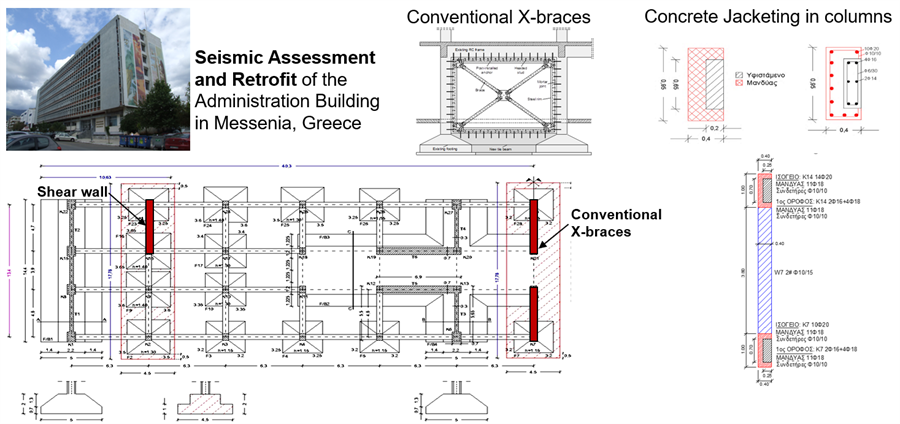Within our vision for Resilient Structures future assemblies should display enhanced performance against time mitigating damage for increased loads and absorbing multiple natural and human-made disasters. With a main focus on working within the existing construction tradition, we must invent those methods that can tailor structures in a way to satisfy multiple performance objectives, thus supporting a quick adaptation of our built environment to the new more demanding design challenges.
Current research activities
Buckling reduction
Steel sections are susceptible to local buckling while steel members buckle globally under large compression stresses. New systems are under development with controlled inelastic behaviour to improve steel structures stability.
Braced with intentional eccentricity (BIE)
In structures, steel braces constitute the main lateral-resistant mechanism against strong winds or earthquakes. BIE is a new bracing system that offers a combined axial-flexural behaviour. Being subject to bending moment in addition to axial force, BIE provides a more stable behaviour in compression while a large secondary stiffness in tension. Stress and strains are more evenly distributed along the brace length, thus delaying the onset of local buckling and fracture.
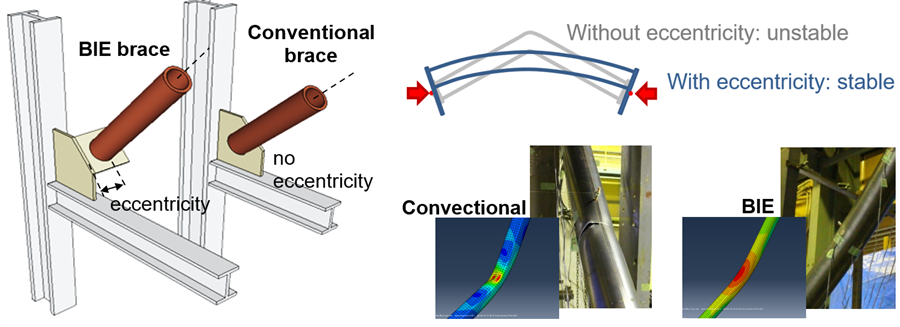
Concrete-filled steel tubular columns (CFTs)
Concrete-filled steel tubular (CFT) columns have many advantages over the conventional columns based exclusively on either steel or concrete. CFT columns among other benefits (fast to erect, economical, fire resistant) provide large axial strength, thus safely transferring the vertical loads with the minimum column size. CFTs also provide large lateral stiffness and great energy dissipation capacity making them an ideal solution for demanding applications.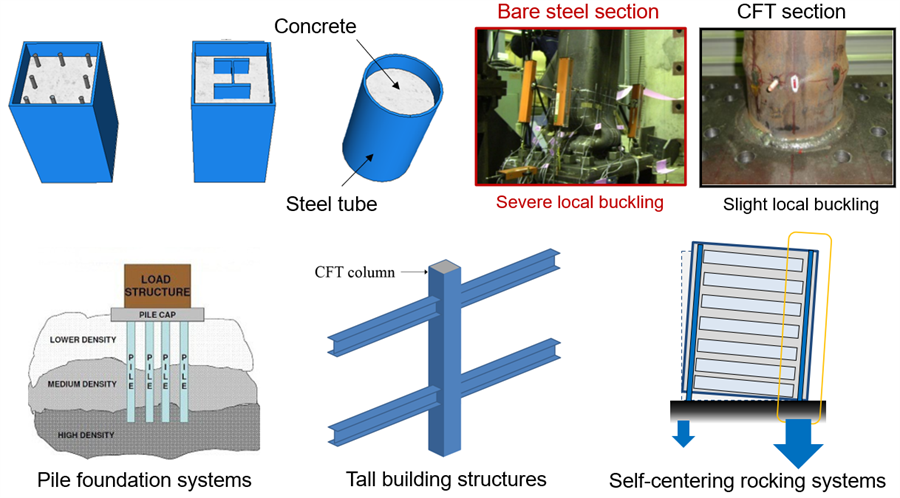
Understanding failures of connections
An advantage of steel and composite structures is their quick assembly at predefined connection locations. However, connections often fail prematurely resulting in a partial or complete collapse of structures. Experimental and numerical research is undertaken to quantify the actual capacity and failure modes of various steel connections (gusset plates, beam-to-column joints) and develop new ductility-based design methodologies within the framework of European and American codes.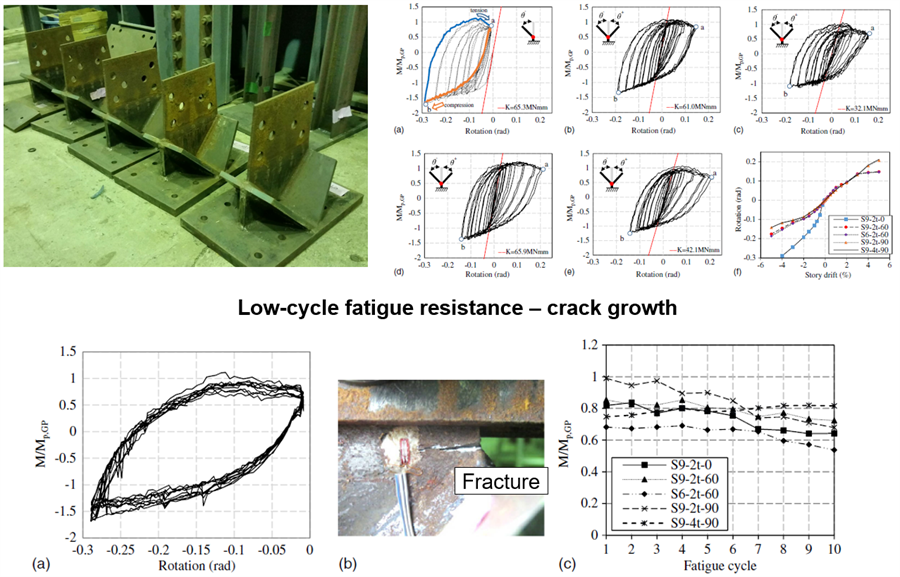
Resilient-based design methods
A damage-controlled design of structures is a basic step towards resilience. This research develops new design/assessment methods for structures that directly control local deformations of members, hence damage, by limiting the overall response to predefined values. This is achieved by expressing traditional design quantities, like the behaviour factor q or R, as mathematical functions of damage on the basis of large analytical and experimental response databanks that contain both information.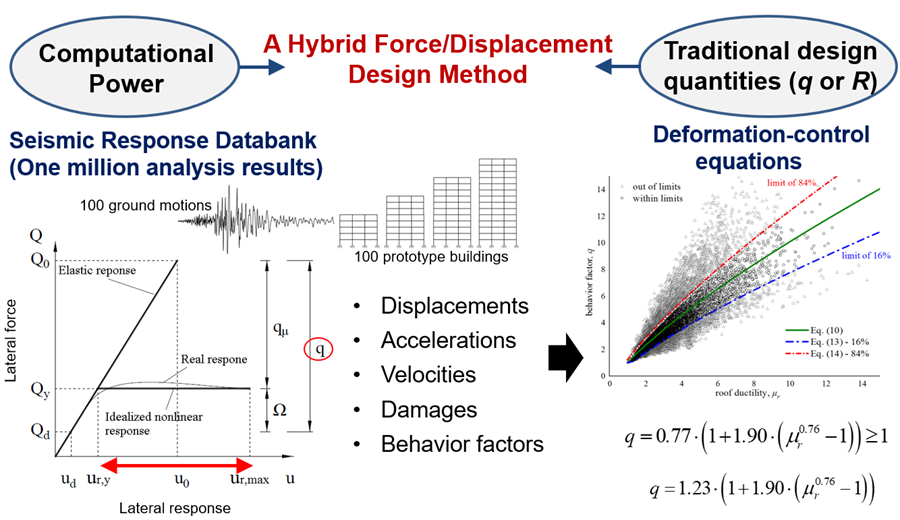
Knowledge transfer to real-world construction
Existing old reinforced concrete structures and infrastructures is the Achilles’ heel of our built environment. Recent earthquake and wind disasters in many countries (Mexico, Chile, Greece, Italy, Turkey) have pointed out the importance to act quickly and bring these structures up to current safety standards. Steel and composite materials can be the basis for developing lightweight, ductile, and low-disturbance retrofitting technologies for both the super-structure and foundation.